成果發表 > 研究成果藝廊 > 行星科學
研究成果藝廊
行星科學
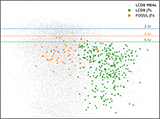 |
The spin-rate limit of Jupiter Trojans Rotation period and spin rate vs diameter for the FOSSIL JTs (orange dots). The same is shown for previously measured JTs (green dots) and MBAs as well (the background gray ...(more) |
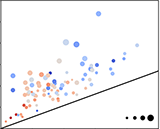 |
Disc radius as a function of stellar distance Plot of distance vs. disc radius for a sample of 97 spatially resolved debris discs. The colour of each data point denotes the photospheric temperature of the host star. The ...(more) |
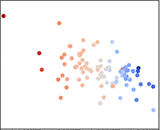 |
Dust temperature vs. stellar luminosity Plot of stellar luminosity vs. disc temperature for a sample of 97 spatially resolved debris discs, taken from Marshall et al. (2021a). The dust temperature is plotted as a ratio ...(more) |
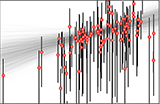 |
A Trend in Stellar Luminosity-Disc Radius Plot of stellar luminosity vs. disc radius for a sample of 97 spatially resolved debris discs, taken from Marshall et al. (2021a). The vertical error bars denote the width of ...(more) |
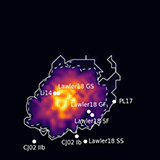 |
Constraining Migration Models with the 2:1 Resonance Probability map of the fraction of symmetric island twotinos (fS) and asymmetric twotinos in the leading island (fL), constrained by the observed population fractions of the symmetric and leading asymmetric ...(more) |
 |
Contribution of several MMRs populations to the production of JFCs The number of new visible Jupiter Family Comets (JFCs) produced by each mean motion resonance (MMR) with Neptune, in our numerical simulations including the 34 largest dwarf planets (DPs, red ...(more) |
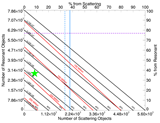 |
Number of cometary nuclei required to sustain a population of JFCs in steady state. A figure representing the different possible combinations of the contributions of each of the three populations of the Kuiper belt (Classical, Resonant, and Scattering), to the total Jupiter Family Comet ...(more) |
 |
Pluto Occultation 2018 Lightcurves of an occultation of a background star by Pluto observed on 15 Aug. 2018 at OAN, SPM in Baja California, México. The lightcurves were collected at a cadence of ...(more) |
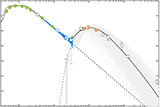 |
Spectral energy distribution Spectral energy distribution (wavelength vs. flux density) of the debris disc host star HD 105. Data points are coloured by wavelength regime: green for optical/near-infrared, blue for mid-infrared (including the ...(more) |
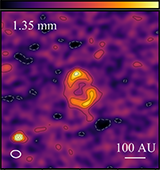 |
A Young Solar System Analogue Imaged by ALMA ALMA Band 6 (1.3mm) naturally weighted image of HD 105, a young pre-main sequence star with a bright debris disc. The disc is spatially resolved, with a radius of ~ ...(more) |
 |
Diffusion map around the small moon Aegaeon (Saturn LIII). Diffusion is computed after a frequency analysis of thousands of test particles. Bluer colors are for stable orbits, redder colors indicate unstable ones. ...(more) |
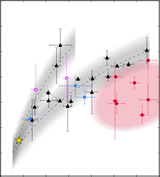 |
TNO surface colors in g, r, and z bands g-r and r-z photometry of TNOs, showing the 3 unique surface types revealed by these three bands. ...(more) |
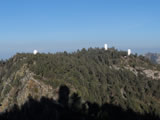 |
TAOS II enclosures at San Pedro Mártir Observatory The three TAOS II enclosures at San Pedro Mártir Observatory. ...(more) |
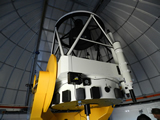 |
TAOS II Telescope. TAOS II telescope at Site #2. ...(more) |
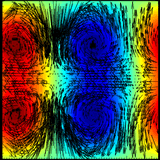 |
Weather on a Hot Jupiter Weather map of the transiting hot Jupiter HD 189733b, illustrated by air pressure (color) and wind velocity fields (arrows), as viewed by someone who descends through the planetary atmosphere. The ...(more) |
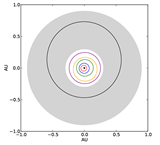 |
A super Earth in the habitable zone_animation gif Orbit diagram of the planetary system surrounding the K-dwarf star HD 40307. The grey area indicates the star's habitable zone. Notice that the outermost planet is right in the habitable ...(more) |
 |
A back-scattered image of the E44 CAI from the CV3 Efremovka chondrite taken on a scanning electron microscope A back-scattered image of the E44 CAI from the CV3 Efremovka chondrite taken on a scanning electron microscope. This CAI is of particular interest because of the first demonstration of ...(more) |
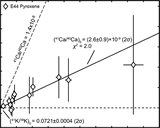 |
A new initial abundance of 41Ca in the early solar system This isochron diagram shows the inferred 41Ca/40Ca ratio in the E44 CAI from the Efremovka meteorite. 20 years ago, the former existence of 41Ca (half-life = 0.1 Myr) was first ...(more) |
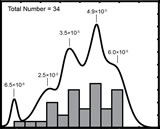 |
The distribution of 26Al/27Al in spinel-hibonite spherules extracted from CM chondrites Inferred 26Al/27Al ratios for spinel-hibonite spherules from Murchison and Paris and the probability density plot derived from the data. The overall 26Al/27Al range in the two groups of SHIBs is ...(more) |
 |
Hot Jupiters on Prograde/Retrograde Orbits Schematic of the theoretical model showing the dipole fields of a proto-star that are misaligned with both the stellar spin axis and the orbital plane of a hot Jupiter. Consequently, ...(more) |
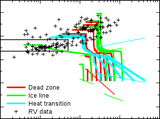 |
Planet traps and the population of exoplanetary systems Evolutionary tracks of planet forming at multiple planet traps at which rapid type I planetary migration is halted. Three types of traps are considered: dead zone (red lines), ice line ...(more) |
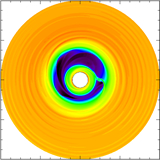 |
Asymmetric distribution of dust in an eccentric protoplanetary disk Gas (left panel) and dust (right panel) density maps of a face-on protoplanetary disk harboring a gas giant planet of 5 Jupiter masses. ...(more) |
 |
Tidal and Magnetic Interactions Between a Hot Jupiter and its Host Star in the Magnetospheric Cavity of a Protoplanetary Disk The upper plot illustrates our model, which shows a hot Jupiter orbiting a CTTS in a magnetospheric cavity of a protoplanetary disk. The initial orbit of the planet is set ...(more) |
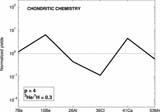 |
Yields of 7Be, 10Be, 26Al, 36Cl, 41Ca, and 53Mn for a chondritic chemistry and the spectral parameters p = 4 and 3He/1H = 0.3 Yields of 7Be, 10Be, 26Al, 36Cl, 41Ca, and 53Mn for a chondritic chemistry and the spectral parameters p = 4 and 3He/1H = 0.3. The yields are normalized to the ...(more) |
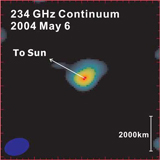 |
SMA observations of the Comet C/2002 T7 (LINEAR) Top left: SMA image of the 234-GHz continuum emission of Comet C/2002 T7 (LINEAR). The 1.3-mm continuum traces the dust distribution in the inner coma. The blue ellipse shown at ...(more) |
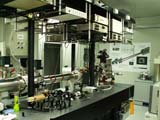 |
The Dust Buster mass spec The Dust Buster mass spec assembled in our lab almost ready to analyze comet samples from the Stardust mission with high sensitivity and multi-element capability. ...(more) |
